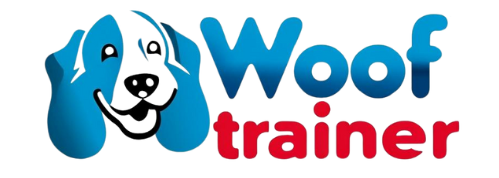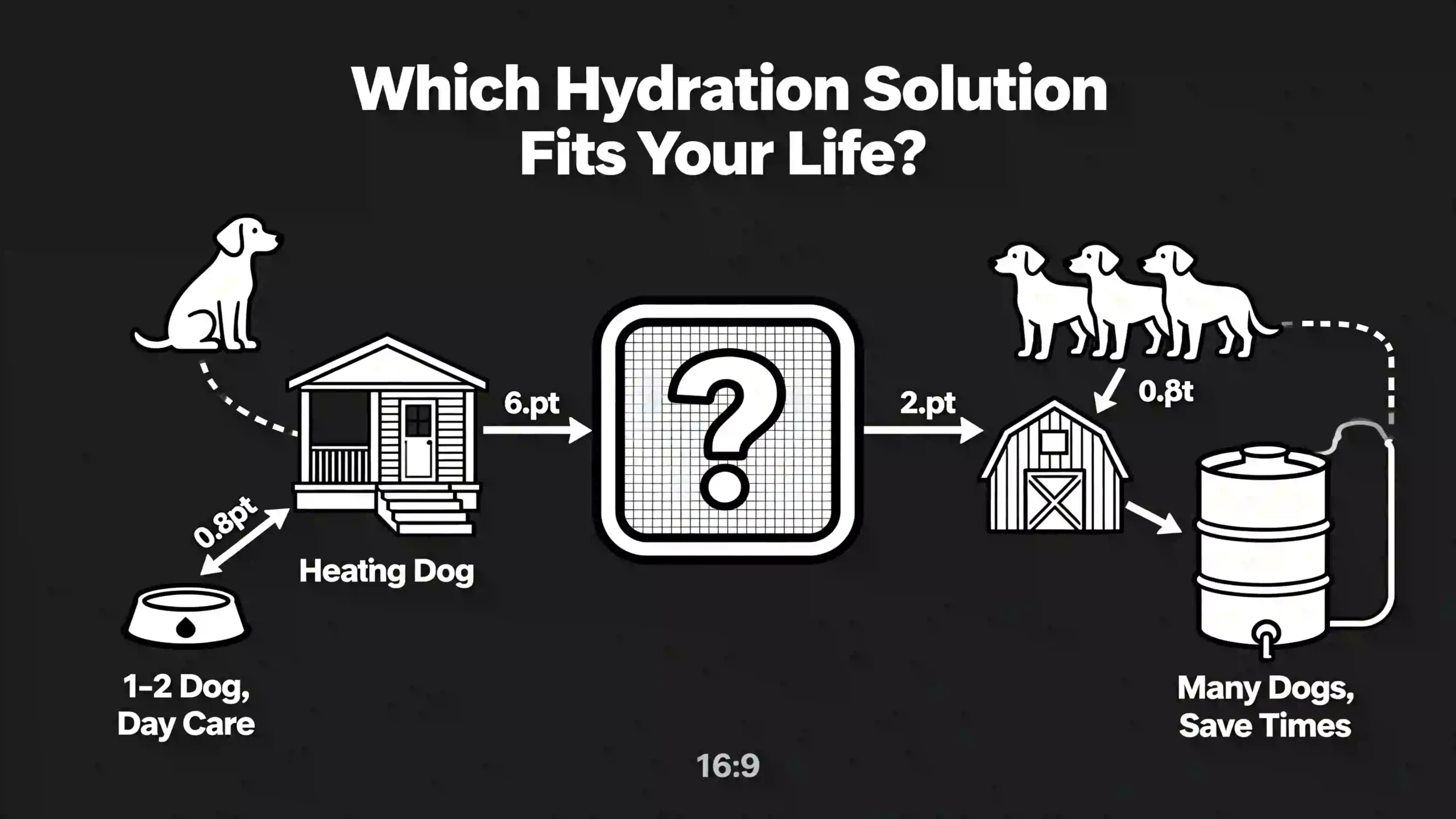When winter hits and outdoor pet water freezes solid, it’s not just a minor inconvenience—it can risk dehydration, especially for cold-weather breeds like Huskies, Labradors, or Shepherds. Many suburban or rural dog owners look for solutions that offer convenience, safety, and durability. Two of the most common are heated dog bowls and heated buckets (or stock-tank/bucket-style waterers). Understanding their pros, cons, and trade-offs helps decide which suits your barn dog care or farm-dog waterer needs.
What Are Heated Bowls and Heated Buckets?
- Heated Dog Bowl: A relatively shallow container, often thermostatically controlled, with a heating element at or under the base. Designed to keep water from freezing in cold temps, often sized for one or two dogs, and used outdoors.
- Heated Bucket / Stock-Tank Waterer: Much larger capacity containers, sometimes vertical/hanging buckets, often used in barns, kennels, or farm settings. These have more water volume, require more heating power, and often are built tougher (rubber, heavy-duty plastic, or metal) with insulation or heating elements designed for larger capacities.
Pros & Cons: Heated Bowls
| Advantage | Disadvantage |
|---|---|
| Compact size fits porch, deck, kennel; cheaper upfront | Small capacity — needs frequent refill or risk of freezing if empty or nearly empty |
| Uses less power; some models thermostatically react only when needed | Less useful if you have multiple large dogs or livestock needing water simultaneously |
| Easier to clean, lighter, usually less bulk to store when not in use | More exposed to wind & snow; shallow water can freeze from top faster; dogs may tip them over or splash them out |
Use-cases where bowls succeed:
- Single large breed or one/two dogs, mainly in suburban yards.
- Situations where you walk through porch or garage to plug it in.
- Where frequent attention (morning + evening) is acceptable.
Pros & Cons: Heated Buckets / Large Waterers
| Advantage | Disadvantage |
|---|---|
| High capacity — fewer refills needed, reliable for long absences | Bulkier size; requires more floor or barn space |
| Can serve multiple dogs or even livestock at once | Heavier and harder to move when filled with water |
| Stays liquid longer in extreme cold due to water depth | Typically consumes more electricity to heat a larger water volume |
| Durable build; designed for barns, kennels, or outdoor setups | Cleaning can be awkward — more surface area, harder to scrub in winter |
Best for:
- Multiple large breed dogs, or dogs plus livestock in rural/barn environments.
- When owners want “set it and forget it” as much as possible.
- Cold-climate kennels, or when bowls would be too small or too many to manage.
Comparing Examples & Power Requirements
From product reviews (Amazon. etc.) and data:
- Many heated bowls are rated to keep water from freezing down to around −20°F (−29°C), depending on insulation and element power.
- Bigger buckets require more wattage; for example, a 5-gallon heated rubber bucket or flat-back bucket may need 90–120 W or more.
- Smaller bowls (1 quart to ~1-1.5 gallons) with good cord protection and thermostatic control often consume between ~25-60 W.
How the WoofTrainer Heated Dog Bowl Compares
To illustrate a real-world example, the WoofTrainer Heated Dog Bowl offers many of the features suburban/rural dog owners care about:
- It’s heavy-duty: food-grade 18/8 stainless steel, 30 cm in diameter and 10 cm high – enough water for large breeds without being overly bulky.
- Safety is emphasized: operates on 24V low-voltage supply, eliminating much of the shock risk. Plus a 50W heating element that maintains water between 0 °C to 20 °C, even when ambient temperature drops to −20 °C.
- The power cord (1.3 m) is wrapped in chew-resistant stainless steel. Base includes a rubber ring to prevent tipping.
In effect, WoofTrainer combines some of the durability and capacity advantages of larger heated buckets, with the lower profile and manageability of a bowl. For many suburban dog owners (with deck plugs or barn outlets), it is a practical middle ground: less frequent refills than small bowls, safer and less cumbersome than large buckets.
Deciding: Which Fits Your Lifestyle?
Choosing between a heated dog bowl and a heated bucket depends heavily on your daily routine, the number of pets you own, and how extreme your winters are. Here’s a breakdown to help decide which is better for specific situations:
| Situation | Lean Toward Heated Bowl | Lean Toward Heated Bucket / Large Waterer |
|---|---|---|
| You have 1–2 dogs; daily walk-out to bowl is easy | √ | |
| You occasionally mind refilling; want maximum “hands-off” solution | Bucket better? | |
| Outdoor placement is near an outlet, limited space on porch | Bowl | |
| Cold snaps often go well below −15 °C / −5 °F, and you’ll be away for many hours | Bucket or high-capacity bowl like WoofTrainer | |
| Want lowest ongoing electricity cost; size of water load small | Bowl | |
| Want something that can serve dogs and livestock / barn animals | Bucket or large dual-use waterer |
Additional Considerations
- Scaling up hydration: In kennels or multi-dog households, one container may not be enough. As highlighted in Scaling Hydration: Buckets vs Bowls in Large Kennels, a mix of multiple heated bowls and at least one larger heated bucket can balance convenience, safety, and redundancy.
- Mixed setup benefits: Many suburban or rural owners choose to combine both: a large heated bucket in a barn or utility shed for high-capacity coverage, plus smaller heated bowls closer to the house or porch for easy access. This way, dogs always have backup water and you avoid the risk of a single point of failure.
- Routine flexibility: If you’re often home and don’t mind a quick refill, bowls are more economical and easier to handle. If you travel, work long hours, or face harsher winters, a bucket is often more reliable.
Ultimately, the decision isn’t strictly either/or—many families find that using both bowls and buckets in different contexts ensures steady hydration for their pets throughout the winter.
Safety and Practical Tips
- Use thermostatically controlled units: they help conserve power and prevent overheating.
- Cord protection is vital: chew-resistant covering, avoid loose cords accessible to pets.
- Shelter the unit from wind and direct snowfall: wind increases heat loss drastically. Maybe place under an awning or in a semi-enclosed shed.
- Clean regularly: bacteria grow faster in warmer water; debris, ice mash etc can foul taste or reduce dog’s inclination to drink.
- Inspect heater during extreme cold: if element fails, water freezes, which may damage bowl/bucket.
- Use proper outdoor-rated electrical outlets (GFCI etc), especially in wet / winter conditions.
You might also want to explore “Safety Tips for Using Electric Heated Dog Bowls Outdoors” to ensure your setup is safe for your breed, your yard, and your local climate.
Final Thoughts
For suburban dog owners in cold winters who want moderate price, good durability, and peace of mind, here’s a rule of thumb:
- If your need is fairly modest (one or two dogs, you visit them a few times a day), a high-quality heated bowl (or something like the WoofTrainer) often hits the sweet spot.
- If you have bigger demands—multiple dogs, livestock, being away more than a few hours, or particularly low temperatures—then a heated bucket or stock-tank waterer makes more sense despite higher upfront and running costs.
Ultimately, the target is consistent access to outdoor pet water that doesn’t freeze, so your dog stays hydrated, healthy, and comfortable—without you having to refill or troubleshoot constantly.
FAQ
- Will a heated bowl or bucket prevent all freezing, even in −20 °C (−4 °F)?
Many well-designed units (with high wattage, good insulation, and sheltered placement) can keep water from freezing even at −20 °C, though performance depends heavily on wind chill, snowfall, and how empty the container is. With small bowls, the water volume matters very shallow water freezes faster. - How much extra electricity will a heated bucket cost?
It depends on wattage, temperature drop, and how often the heating element runs. A typical 60-W bowl may draw ~60 W only part of the time (thermostatic), so perhaps 1–2 kWh/day in very cold weather. A large bucket (90-120 W or more) will cost more. It’s best to estimate cost using your local electricity rate. - Is stainless steel or plastic better?
Each has trade-offs. Stainless steel is more durable, easier to clean, less likely to retain odors, and tougher against chewing. Plastic is lighter, often cheaper, but can degrade under UV, can be scratched (harbors bacteria), and may warp or degrade with extreme cold. For durability, 18/8 stainless steel (as used in WoofTrainer) is excellent. - Can the dog drink from a heated unit all winter without refilling daily?
Only if the water level stays high enough, it stays clean, and the heater continues functioning. But in most suburban setups, even with large buckets, daily or every-other-day check/refill is wise—dogs tend to splash, dirty water, or chew/scratch containers, which affects water quality and exposes heating elements if water runs too low. - What about safety—electric shock, fire, chewing risks?
These are real concerns. To mitigate: use units with low-voltage or properly insulated wiring; cords wrapped in steel or chew-resistant materials; proper outdoor-rated plugs, GFCI protected circuits; place unit in protected, visible location; regular inspection. Brands that emphasize safety features (e.g. thermostat, chew-resistance, low voltage) are preferable.
Resources You May Find Helpful
- For large‐breed dogs, check How to Choose a Heated Dog Bowl for Large Breeds to size correctly.
- Review Safety Tips for Using Electric Heated Dog Bowls Outdoors for wiring, cord, and grounding considerations.
- If you manage multiple dogs or a kennel, Scaling Hydration: Buckets vs Bowls in Large Kennels helps organize capacity and maintenance.
- For deeper understanding of all options and features, see Heated Dog Bowls: The Complete Guide to Keeping Pets Hydrated in Winter.


